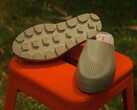Researchers at MIT's Computer Science and Artificial Intelligence Laboratory (CSAIL) have created a new system that aims to address a huge trade-off in 3D-printing — sustainable 3D-printing filaments being weaker than their counterparts. The toolkit enables the creation of strong 3D-printed objects while mostly using eco-friendly filaments.
Most of the 3D-printing done today is done with strong, petroleum-based plastics. Even though there are filaments made from recycled or biodegradable materials, they are brittle, lacking the mechanical strength needed for load-bearing parts.
The new system solves this problem by combining both kinds of materials. The system's software analyzes a 3D model to predict which parts will experience the most stress. It then reinforces these critical areas with small amounts of high-performance filament, while the rest of the structure is printed with the weaker plastic.
The researchers found that by using just 20% of strong filaments that would have been used for an object for reinforcement, the resulting object had up to 70% of the strength of an object printed entirely from strong plastic. Even better, in some tests, the reinforced parts were stronger than their full-strength counterparts.
Our hope is that SustainaPrint can be used in industrial and distributed manufacturing settings one day, where local material stocks may vary in quality and composition. — Maxine Perroni-Scharf, an MIT PhD student and lead author of the paper on the project.
To make the technology more accessible, the team created a DIY testing toolkit to enable users to assess strength and improve the structural integrity of their models before printing. They also plan to make SustainaPrint open-source.
Buy the Flashforge Adventurer 5M 3D Printer on Amazon for $259.
Source(s)
Image source: Vinicius Amano































